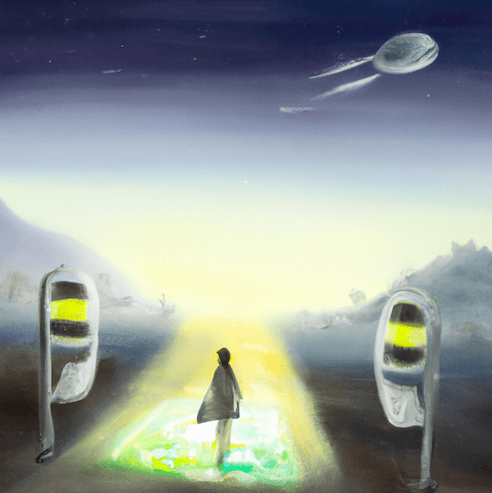Teleportation, the idea of instantaneously moving from one place to another, has long been a staple of science fiction. But is it possible to teleport to other planets? Could we one day teleport humans and other living beings across the vast distances of space? In this blog post, we’ll delve into the science behind teleportation, explore current research, and discuss the feasibility of teleporting to other planets.
Exploring Teleportation

The concept has been around for centuries, appearing in works of fiction as early as the late 1800s. However, it wasn’t until the mid-20th century that scientists began to take the idea seriously. The development of quantum mechanics and the discovery of quantum entanglement, which allows particles to be linked in such a way that they can instantaneously affect each other regardless of the distance between them, has provided a scientific foundation for the idea of teleportation.
One of the first scientists to seriously consider the idea of teleportation was physicist Richard Feynman, who in the 1950s proposed using quantum entanglement to teleport information from one particle to another. This idea was later developed into the theory of quantum teleportation, which describes how information about the state of a particle can be instantaneously transmitted from one particle to another without physically moving the particle itself.
While quantum teleportation has been demonstrated in the laboratory, it is important to note that it is not teleportation in the sense of Star Trek. Rather than moving a person or object from one location to another, quantum teleportation involves transmitting the information about the state of a particle to another particle, which can then be used to reconstruct the original particle.
Despite this distinction, the idea of has captured the public imagination, and scientists have continued to explore the possibility of teleporting living beings. Theoretical physicists have proposed using teleportation to transport humans and other living beings across large distances, such as from Earth to another planet. However, there are many scientific and technological challenges that must be overcome before this can become a reality.
One of the main challenges is the sheer amount of information that would need to be transmitted to teleport a human. The human body is made up of billions of atoms, and each atom has a unique set of properties, such as its position and velocity. In order to teleport a human, all of this information would need to be transmitted instantaneously to the target location.
Another challenge is the energy requirements for teleporting. Teleportation would require a huge amount of energy to transmit all of the information about the state of a human from one location to another. This energy requirement is so high that it is currently beyond our technological capabilities.
Finally, there is the issue of the uncertainty principle. According to this principle, it is impossible to know both the position and velocity of a particle with absolute certainty. This means that there will always be some uncertainty in the information transmitted during teleportation, which could result in errors in the reconstructed human.
Despite these challenges, scientists and engineers are actively exploring the feasibility of teleporting. In recent years, researchers have made progress in developing the technology required for teleportation, such as the development of high-speed, long-distance communication networks that could be used to transmit the large amounts of information required for teleportation.
While teleportation to other planets is still a long way off, it is an exciting and intriguing area of scientific research. As our technology continues to advance, and our understanding of the universe deepens, it may one day be possible to teleport humans and other living beings across the vast distances of space. Whether or not we will ever be able to teleport to other planets remains to be seen, but the idea of teleportation continues to inspire and captivate people.
Check out our Novel Writing Workbooks
Check out Little Tree Food Forest for articles on food forests and homesteading.
Check out FoodieScapes for articles on growing, fermenting and preserving food.
Subscribe to our newsletter to get information delivered to your inbox on how to write a book, outlining your novel, keeping journals, marketing your novel, self-publishing, writing poetry and more.










